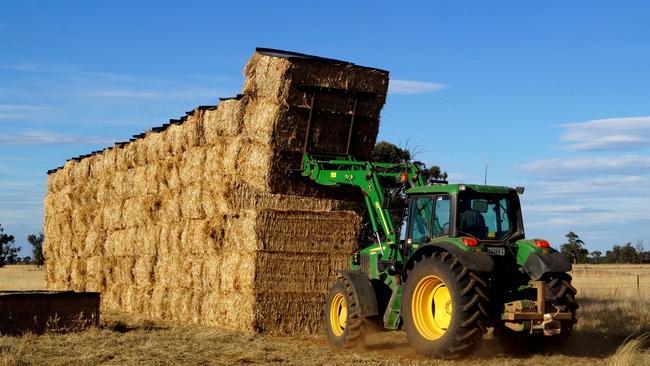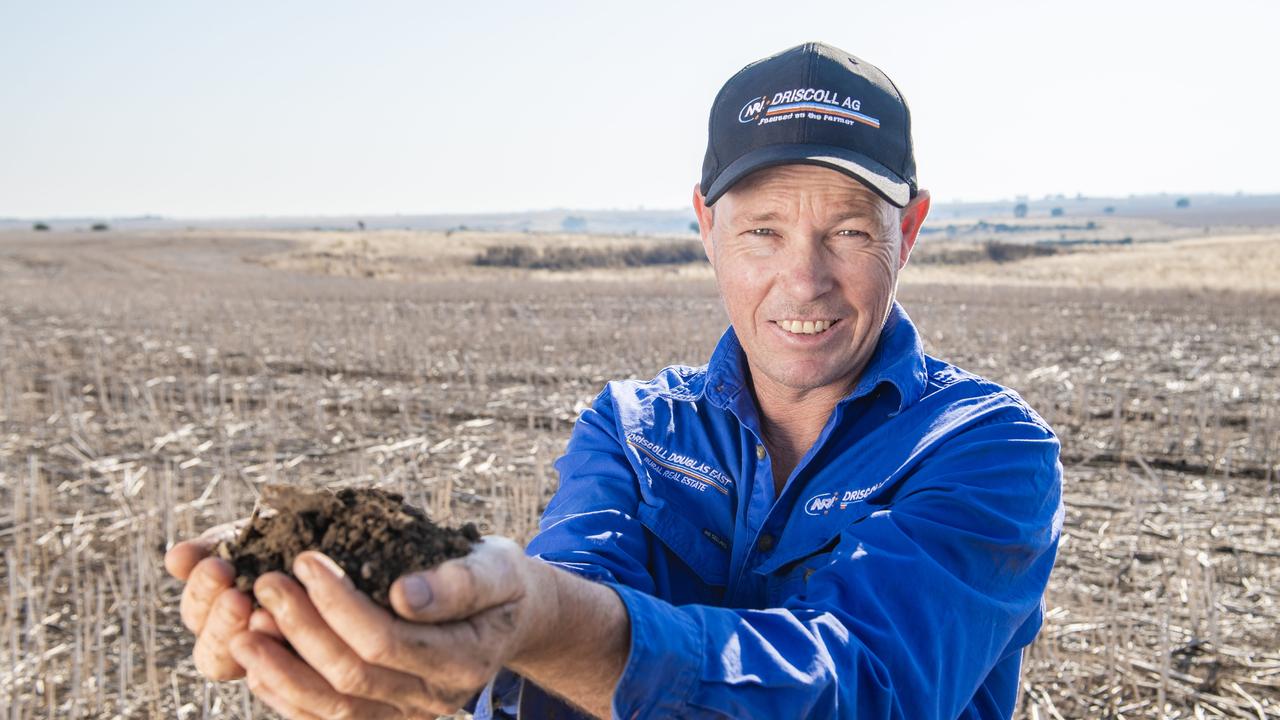Hay growers worry but Chinese grain buyers boost crop prices
As a major realignment of hay production and demand looms, Chinese grain buyers are pushing up crop prices.

THE hay industry in southeastern Australia is at a crossroads.
Hay growers are worried about their enterprise and how it may perform for them next season.
As cropping programs are being finalised now, many hay growers are not impressed with the outlook for hay prices.
With many sheds already full of hay baled last spring, growers are rightly questioning why they should continue to grow more hay.
Cereal hay demand is poor at present as dairy and beef producers have plentiful stocks of hay and silage and the five-year decile for hay prices is sitting on a lowly 3.2.
Dairy farmers, particularly, have been working hard to avoid being dependant on the market for their fodder.
Dairy farms in northern Victoria and the Riverina are becoming croppers in their own right by purchasing more land and growing their own forage including oaten and vetch hay and corn.
The tremendous turnaround for graziers in NSW has left a legacy in the hay sector that may take many years to recover.
New growers who have recently invested in sheds and machinery dedicated to hay are the most disillusioned, but many will still grow hay.
Many Mallee and Wimmera growers are keen to maintain a relationship with a hay exporter and contract a paddock or two of oats for export.
While the returns may not be ideal this coming season, they know that hay can remove 85 per cent of ryegrass seeds from weedy paddocks and high quality hay will be needed.
Some export hay growers are finding their exporters have their own challenges.
Exchange rates are high, shipping containers to north Asia is difficult to source and there are some uncertainties around accessing major markets this year.
Accordingly, some exporters have slowed their output and some new crop area contacts have been cut by 30 to 40 per cent.
Vetch provides options as a hay crop or valuable green manure, but the area sown to cereal hay area will fall.
In earlier years, when the Victorian hay industry was managing high levels of carry-over stocks, the area of cereal hay fell.
After the glut year of 2010-11 when 128,000ha of cereal hay was rain damaged, the area fell 15 per cent, according to the surveys of the Australian Bureau of Statistics. After the record production year of 2016-17, the area of hay fell by 4.8 per cent from 203,000ha.
As the cereal hay area sown in Victoria for the 2019-20 season has grown to an estimated 280,000 hectare, the fall in area this year may be much more dramatic.
MORE
GROWERS TRY TO SELL OFFSHORE AS DOMESTIC DEMAND STAYS LOW
BUYERS, GROWERS MAINTAIN STANDOFF OVER PRICE DIRECTION
HAY EXPORTS LIFT WITH DEMAND FROM KEY MARKETS IN ASIA
BIG CHINA GAIN FOR AUSTRALIAN EXPORTS DESPITE BARLEY TARIFF
ALTHOUGH the volumes of Australian grain sold to China this season are well down due to the Chinese tariffs on Australian barley, Chinese grain demand has pushed up the prices paid by other importing countries.
With an expanding economy, 18.5 per cent of the world’s population and only 7.6 per cent of its arable land, it is no wonder that China is a powerhouse for grain imports.
Despite the trade dispute over barley exports, Australian exports of wheat to China are above-average.
Grain analysts report that in the first four months of the current marketing year China imported 980,000 tonnes of wheat from Australia, about three times the five-year average.
Granted, the lack of interstate shipping from Western Australia and the end of the east coast drought has made Australian wheat more competitive, but Chinese grain demand is soaring.
According to the International Grains Council, Chinese imports in season 2010-11 represented 1.7 per cent of the total world trade of grain.
By 2018-19 imports had expanded to 4.0 per cent and in the current year Chinese grain imports are forecast to reach 11.3 per cent of the world total.
Although China is not importing any meaningful volumes of barley from Australia this season, the country’s imports of corn has underpinned the world price for feed grains.
The 46.6 million tonnes of Chinese grain imports is expected to include 9.6 million tonnes of wheat, up 300 per cent from two years ago, and 23 million tonnes of corn, up 460 per cent in two years.
Analysts attribute the expansion of feed grain demand to the recovery of China’s pig population following culling due to the African swine flu outbreak in 2018 and 2019.
Oilseed imports are substantial, with China importing more than 100 million tonnes of soyabean each year, which has remained at a consistent level of about 58 per cent of the world total for the past 10 years.
After a sustained rally, US soybean futures eased $7.90 a tonne last week, but Canadian canola futures on the Winnipeg exchange traded $15.70 higher and Paris futures were up $5.40.
Canola in the Geelong port zone is $9 at tonne higher and its is $15 a tonne higher in Portland and Port Kembla sites this week. Most of the canola produced this season is considered sold.
Global wheat markets have also tempered lately and the market will be eagerly watching the status of cereal crops of the northern hemisphere as they begin to emerge from beneath the snow.
In a year of record grain production for eastern Australia, grain growers have been fortunate to receive both high yields and high price.
Rarely do these two factors coincide but this season they have created a great boost to farm revenues.
MORE
ASAHI BEVERAGES TO SOURCE BARLEY FROM VICTORIAN GRAIN GROWERS


